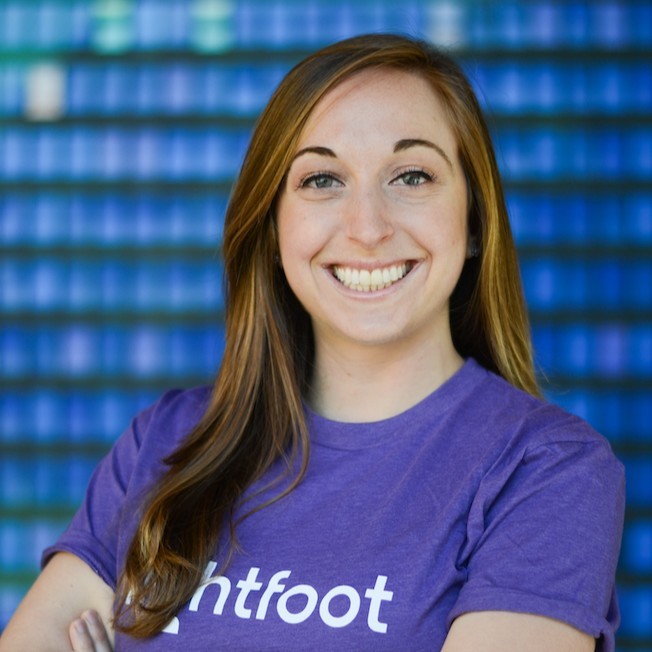
Only Up From Here: 2024’s State of Fintech and the Hero’s Journey
We’re at the scary part of “the hero’s journey” in fintech, with a bottom for funding and a BaaS crisis, but we’re about to enter a new, exciting stage.

In our Making Markets series, learn from exceptional entrepreneurs about their magic moments in company building and important lessons for shaping the industries that matter today.
Danielle Pensack and her co-founders Deirdre Clute and Will Schmitt have applied data-driven measurement to everything from product development and fundraising to hiring a diverse and inclusive team. Founded in 2018, Rightfoot is tackling the largest untapped opportunity in fintech: consumer debt, a $14.5 trillion-dollar problem. Currently, their sights are set on addressing the $1.7 trillion-dollar student loan crisis, with expansion to credit card debt this month.
Rightfoot is an embedded payments technology that allows companies to add instant debt payments into any application. With Rightfoot’s infrastructure, borrowers can make micro-payments on their student loans through the banking, PFM, or P2P payment apps they already know and love; benefits providers can facilitate tax-free employer contributions to employees’ loans; payroll companies can deliver self-driving payroll experiences; and individuals can tip directly to a borrower’s loan debt.
Sending money to a borrower’s loan account is complex, as loan accounts are not routable entities like bank accounts. Rightfoot has built banking partnerships and direct connections into loan servicer backends that have largely been untouched since the 1970s to streamline and modernize debt payments.
We recently sat down with Danielle to hear how her team makes even the toughest company-building decisions based on a data-driven goal framework.
In starting Rightfoot, you and your two co-founders made some very intentional decisions around how to build the company. Tell us about that process.
Rightfoot was born out of a clear need to help borrowers with their debt, something Will, Deirdre, and I are extremely passionate about. Of the founders, two of us had just graduated from Stanford’s business school with hundreds of thousands of dollars of student loans between us, so we had a clear intention from the get-go that Rightfoot would exist to empower borrowers to take control of their debt.
We set out to create a company that maximizes the wealth of underserved populations by helping them repay their consumer debt, and we chose to be especially intentional in two other areas: applying data-driven testing to all our business hypotheses and technology frameworks, and weaving diversity into everything we do.
When starting Rightfoot, the three of us spent many hours discussing what was important to us, how to apply those principles in a measurable way, and what success would look like in each area.
How have you put intentionality into practice?
First, we created a data-driven testing culture. We test and measure every business hypothesis among borrowers and potential and existing customers. On the tech side, Will leads a data-driven developer team; whenever they’re considering building a new feature, they test and measure it first. We’re committed to Rightfoot being a company that delivers value to our customers, and ultimately, to Americans weighed down by the crushing burden of debt, and we can’t do that by just guessing what might work.
In terms of driving inclusivity, we’ve put clear, measurable frameworks in place. For example, when seeking venture capital investment, we decided we would only take funding from a firm that had female and historically underrepresented partners. We asked every potential investor how they measured diversity in their portfolio and what their LPs looked like.
We had to break ties with investment teams who didn’t meet our criteria, and that was difficult, but we stuck to our guns.
We also wanted to ensure a specific portion of the funds in our cap table came from women, people of color, or LGBT+ investors. Sarah Smith at BCV was completely on board with this concept, and even drafted a diversity rider as part of our termsheet that guaranteed 7% of the funds outside of our lead investor would come from underrepresented check-writers. We also applied these filters when choosing our angel investors.
When it comes to hiring, we set strict data-driven metrics to ensure we are building a diverse team.
What impact has this type of intentionality had on your business growth?
A few years ago, we pivoted our business model based on test results, despite having early signed customers. We initially thought Rightfoot would offer loan repayment as a company benefit. We approached potential clients and asked them if they would want a product like ours.
We set a goal of going forward with this business model if 7 out of 10 respondents said yes, but we fell just short of this metric. We got a few “maybes” that we could have counted as “yes” instead of “no” answers.
But intentionality means setting hard metrics and sticking to them, so we looked at our data and had to be straight with ourselves: our offering was not meeting a clear need. At the time, there was not yet any tax advantage for employers to contribute towards employees’ student loans, which made sales tough.
As a mission-driven company, metrics are critical, because you often have clear product-market fit with at least one stakeholder group from the start. The real question is whether those stakeholders are your buyers. Being a founder means continually evolving your mindset, listening to the data you’ve gathered, and navigating to your second or third chapter based on your findings.
How did a data-driven approach help you define your current business model?
When we started working with benefits providers early on, some were already offering debt repayment as a service, but they had to write paper checks to the loan servicers and sometimes wait weeks for payments to post, making the entire process costly and cumbersome.
And sometimes they would find out months later that the payment had bounced because it was sent to the wrong servicer account, and never actually applied — a horror story we’ve heard more than once!
No one had built back-end payment rails that could streamline this messy payments process, and we believed there was a real need. We began running new tests with developers at fintechs, banks, and benefits companies and armed ourselves with data to back up our hypotheses. And so we seized the opportunity to build the first APIs that helped developers make instant debt repayment a possibility.
We didn’t start a company because we wanted to be founders; we started Rightfoot because we were so motivated to break apart the American debt crisis, and we wanted to solve a huge problem that we felt ourselves. So we used data-driven processes to bring our vision to life.
Rightfoot sits on a number of trends where BCV has strong interest and domain expertise, and our firm was thrilled to lead the company’s $5M seed financing round earlier this year. Here’s our take.

We’re at the scary part of “the hero’s journey” in fintech, with a bottom for funding and a BaaS crisis, but we’re about to enter a new, exciting stage.
Relay is reinventing banking with more software and intelligence for every small business owner.
Generative AI can make companies more efficient, but customers have more to gain from it than they do — including in banking, commerce and medicine.